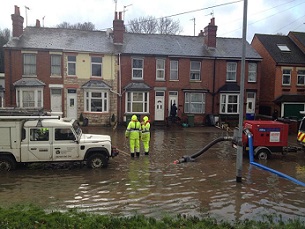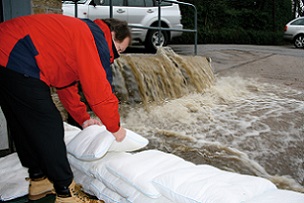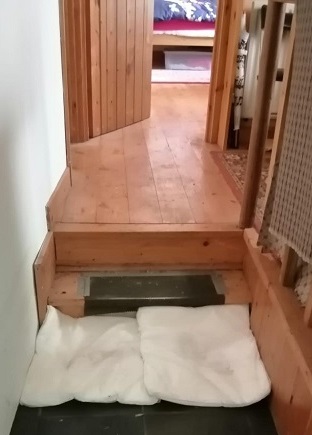 Severe flooding near the River Severn in Worcestershire. Photo by Lee Bond.
Severe flooding near the River Severn in Worcestershire. Photo by Lee Bond.
 A wall of FloodSax can keep a deluge of floodwater out
A wall of FloodSax can keep a deluge of floodwater out
 FloodSax absorbing water inside 80-year-old Annie's cottage in Wales
FloodSax absorbing water inside 80-year-old Annie's cottage in Wales
FloodSax alternative sandbags save couple from river flooding misery
FloodSax alternative sandbags are saving a couple from further misery after they have been flooded out of their home several times over the last 40 years.
The couple live just one street away from the River Severn in Worcester and now have a stock of FloodSax sandless sandbags which they can quickly deploy if flooding is imminent.
Their son, Lee Bond, said: “My parents are now retired and not able to shift heavy sandbags which perform badly.
“The easy-to-store FloodSax are so light they are able to be installed quickly with great effect on holding back the River Severn in Worcester.
“We use them on doorways, low air bricks and even on the passageway down the side of the property.”
Lee added: “Without the FloodSax, airbricks are a real time-consuming issue, bolting down a rubber-backed metal plate on about 15 low level air bricks.”
Many people don’t realise that local authorities have no responsibility to provide sandbags.
The Environment Agency states: “Don’t assume the authorities will provide you with sandbags in a flood emergency. It is the responsibility of property owners to take appropriate action to protect their property from flooding. Sandbags are relatively ineffective when compared to purpose-built flood protection products. We strongly encourage people to use these products.”
Some councils now recommend FloodSax instead of traditional sandbags.
Gosport Borough Council in Hampshire says: “FloodSax have many advantages over traditional sandbags, being easy to store and move, easy to use and, importantly, easy on the environment, having a significantly lower carbon footprint.”
FloodSax are vacuum-packed in packs of five in easy to carry bags and four packs fit into one cardboard box weighing just 21lbs (9.5kilos)– that’s the equivalent to 20 traditional sandbags.
To deploy FloodSax as alternative sandbags when a flood is forecast or is actually happening, simply immerse the FloodSax in 20 litres of water in a large bucket or tub. If time is really critical use the floodwater itself.
The FloodSax will then expand in around 8 minutes to weigh 20kg (44lbs). A special gelling polymer inside simply absorbs the water and then keeps it in the FloodSax so it can be used for however long the emergency lasts, which could be several months.
Each row of FloodSax will keep out approximately 7 inches of water and usually two or three rows are enough to keep floodwater at bay.
They are a multi-purpose product too as they can be used indoors in their dry state to absorb spills, drips, leaks and internal floods. They are so ultra-thin they can be slipped under pipes or even floorboards.
In Wales one 80-year-old lady uses FloodSax because she faces potential flooding into her cottage from a river, a stream and a mountain. Read more at https://bit.ly/3uvfIre
To find out how to get hold of FloodSax go to http://www.floodsax.co.uk/buy/uk-suppliers/